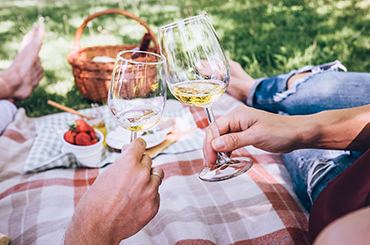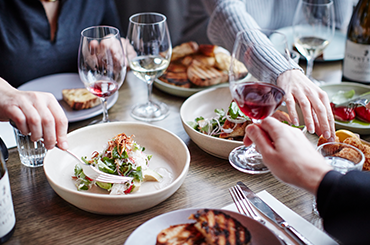But have you ever considered throwing caution to the wind and trying a match that’s a little left of centre? Distiller Holly Klintworth from Victoria’s Bass & Flinders Distillery believes gin can be just as versatile when serving up dynamite pairings at home.
“There’s no reason you shouldn’t be able to select a gin for its botanical selection that complements the taste and flavour of the food,” Holly says. “From juniper berries and spices such as cardamom, cassia, pepper berry, star anise and nutmeg, through to herbs like coastal salt bush, lemon myrtle and mint, to citrus flavours of orange, grapefruit and lime, it’s a world of possibility.”
 Distiller Holly Klintworth
Distiller Holly KlintworthWhile gin can be made as both a grain- and grape-based spirit, Holly prefers the latter. She says yielding a non-neutral base spirit from, say, a shiraz wine, creates texture and added viscosity, allowing it to stand-up to and partner beautifully with food.
“The most prominent flavour in gin is usually juniper, which is ordinarily dry and bitter in nature, however, in the case of gin it is often rounded out with other botanicals,” Holly explains. “In European cooking, juniper berries are often used in meat marinades and rubs, as it has citrus notes, which make it perfect for lemon and herb encrusted roasts.”
It’s these notes that can serve as a guide for food pairings. “Because of the citrus elements to juniper, the zesty flavours work perfectly with seafood. Depending on the kind of seafood or the way it’s cooked, try a particularly citrus-forward gin with smoked fish to add additional acidity,” Holly says. “Whereas fresh seafood, such as salmon or oysters, go perfectly with a gin that contains botanicals of coastal saltbush and kelp, while lighter-style fish or herb-encrusted seafoods work well with more herbaceous styles of gin.”
Considering the botanicals used by a distiller is important when finding dishes to match. Ingredients such as kaffir lime, mandarin, Sichuan pepper or even jujube are ideal with Asian-inspired dishes, for example. Distilleries are now even producing truffle-infused gins, which are the perfect accompaniment to rich earthy dishes, roast chicken, and even blue cheese.
“Ask yourself, is this gin floral, dry, savoury or a sweeter style? I would recommend floral for lighter dishes, such as Japanese or French cuisine, dry or savoury gins with strong citrus notes for seafood, and sweeter-style gins for desserts,” Holly says. “You want to be thinking about pairing rich and flavoursome dishes with stronger more aromatic-style gins, and lighter dishes with lighter styles of gin.”
Holly says another consideration is how you garnish your drink. “For example, we finish our Gin 10 off with a slice of orange, because three of the most prominent botanicals that are showcased in this gin are orange, cardamom and pepper berry,” Holly explains. “You can then start to think of food dishes that would pair perfectly. So, in this case, those spicy citrus notes would work well with something rich and flavoursome like a massaman curry.”
For more from Holly on gin and distilling, tune in to her podcast episode on By the Glass.
You can also go into the running to win a bottle of gin from Bass & Flinders here.






